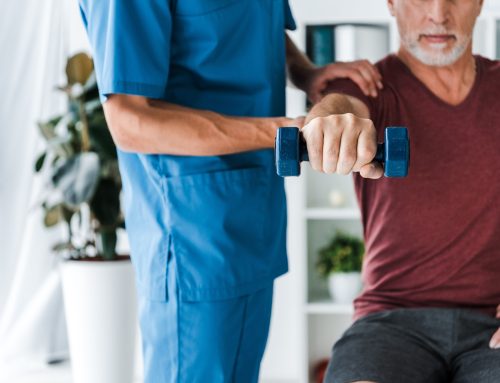
As you scroll through social media feeds filled with fitness influencers and wellness gurus, you may feel bombarded with information about how to keep your muscles toned and your heart healthy. But what about your bones? Did you know that osteoporosis, a condition characterized by weak and brittle bones, affects millions of people worldwide? In this article, we'll delve into the world of osteoporosis prevention and treatment, providing you with the knowledge and tools to keep your bones strong and healthy.
What is Osteoporosis?
Osteoporosis is a condition in which bones become weak, fragile, and more prone to fractures. It occurs when the body loses too much bone mass, doesn't make enough new bone, or both. While osteoporosis can affect anyone, it is more common in older adults, particularly postmenopausal women, due to hormonal changes that can accelerate bone loss.
Prevention: The Key to Healthy Bones
As the saying goes, "an ounce of prevention is worth a pound of cure." The same rings true when it comes to keeping your bones strong and preventing osteoporosis. Here are five essential tips for maintaining bone health:
#1: Get your daily dose of calcium and vitamin D
Calcium is the building block of strong bones, while vitamin D helps your body absorb calcium. Incorporate calcium-rich foods such as dairy products, leafy greens, and fortified foods into your diet. Sunlight exposure or supplements can help you get enough vitamin D but consult with a healthcare professional to determine the appropriate dosage for you.
#2: Exercise regularly
Physical activity is essential for maintaining bone density. Aim for at least 150 minutes of moderate-intensity aerobic activity or 75 minutes of vigorous-intensity aerobic activity per week, plus muscle-strengthening activities on 2 or more days per week. Weight-bearing exercises, like walking, jogging, and dancing, are particularly beneficial for bone health.
#3: Quit smoking and limit alcohol intake
Smoking and excessive alcohol consumption can interfere with your body's ability to build and maintain healthy bones. Limit alcohol intake to no more than one drink per day for women and two drinks per day for men. Smoking should be quit altogether, as it can lower your blood circulation and be bad news for your bones' health.
#4: Maintain a healthy body weight
Being underweight can increase your risk of developing osteoporosis, while obesity can put additional stress on your bones. Strive for a balanced diet and regular exercise to maintain a healthy weight.
#5: Get screened for osteoporosis
Early detection is key to preventing bone loss and fractures. Talk to your healthcare provider about when you should start getting bone density screenings.
Treatment: Strengthening Your Bones
If you've already been diagnosed with osteoporosis, don't lose hope. There are a variety of treatments available to help you manage the condition and reduce the risk of fractures:
Medications
Several medications can help slow bone loss and increase bone density. These include bisphosphonates, hormone replacement therapy (HRT), and selective estrogen receptor modulators (SERMs). Always consult your healthcare provider to determine which medication is best for your specific needs.
Physical therapy
A physical therapist can help you develop a personalized exercise program to improve your balance, posture, and muscle strength, reducing the risk of falls and fractures. If mobility is a concern, you’re not out of options. A low-intensity vibration device can bring you the same benefits in just 10 minutes.
Bracing and orthotics
If you have a spinal fracture due to osteoporosis, wearing a brace or using orthotic devices can help alleviate pain and provide support for your spine.
Fall prevention
Reducing your risk of falls is crucial in preventing fractures. Make your home safer by removing tripping hazards, improving lighting, and installing grab bars in the bathroom. Consider using a cane or walker if needed for additional stability.
Nutrition counselling
A registered dietitian can help you create a balanced meal plan that meets your calcium and vitamin D needs, as well as other essential nutrients for bone health.
Alternative therapies
Some individuals turn to alternative therapies, such as acupuncture and yoga, to help manage osteoporosis symptoms and improve overall well-being. While these practices may offer some benefits, discussing them with your healthcare provider before incorporating them into your treatment plan is essential.
Living with Osteoporosis: Embrace a Bone-Healthy Lifestyle
Adopting a bone-healthy lifestyle is crucial for individuals with osteoporosis. Here are a few tips to help you live your best life, even with this condition:
Stay informed
Knowledge is power when it comes to managing osteoporosis. Stay up-to-date on the latest research, treatment options, and recommendations for maintaining bone health.
Build a support network
Surround yourself with friends, family, and healthcare professionals who understand your condition and can offer encouragement, advice, and assistance.
Take charge of your health
Be proactive in managing your osteoporosis. Follow your healthcare provider's recommendations for medication, exercise, and nutrition, and schedule regular check-ups to monitor your bone health.
Stay positive
A positive attitude can make a world of difference when living with a chronic condition like osteoporosis. Focus on what you can do, celebrate your successes, and remind yourself that your diagnosis does not define you.
Osteoporosis may be a common condition, but with the right prevention strategies and treatments, you can maintain strong, healthy bones and reduce your risk of fractures. By implementing the tips in this blog post and working closely with your healthcare team, you can take control of your bone health and continue leading a fulfilling, active life.
Remember to always consult your healthcare provider before making any changes to your diet, exercise routine, or treatment plan. Together, you can develop a comprehensive approach to osteoporosis prevention and management that's tailored to your unique needs and goals. Contact us to find out more about how a low-intensity vibration device can be incorporated into your healthcare plan for better bones.
Do you intentionally build bone strength in your healthcare routine? What are you going to change to keep your bones strong? Share your thoughts with our readers in the comments below.



